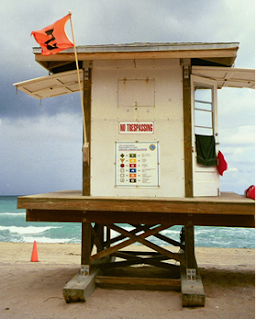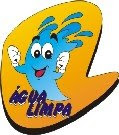Lieutenant Lifeguard / Paramedic for Miami-Dade County Parks and Recreation Department in the state of Florida, USA. Has a bachelor degree in Physical Education and is four classes away from obtaining his Masters degree in Sports Management at Florida International University, USA.
PURPOSE
There is significant confusion worldwide on how to inform the beachgoers of the beach hazards utilizing signage as a way of communication. The study demonstrates that color-coded flag systems without graphic symbols, misleads the public.
In the state of
.png) Florida for example some lifeguard agencies use yellow flags to warn the patrons of rip currents, while others use the orange flags. Black flags are used to indicate no swimming or open surfing depending on the agency. Red flags are used to indicate dangerous rip currents, but are also used to inform the patrons that the beach is closed for swimming due to water contamination, unwelcome marine life or absence of a lifeguard. Blue is frequently used to indicate Jellyfish or Man-o-war, with yellow used to indicate the same condition at other locations.
Florida for example some lifeguard agencies use yellow flags to warn the patrons of rip currents, while others use the orange flags. Black flags are used to indicate no swimming or open surfing depending on the agency. Red flags are used to indicate dangerous rip currents, but are also used to inform the patrons that the beach is closed for swimming due to water contamination, unwelcome marine life or absence of a lifeguard. Blue is frequently used to indicate Jellyfish or Man-o-war, with yellow used to indicate the same condition at other locations.The study was conducted in reaction of the proposed eight color-coded warning flags, (by United States Life Saving Association) to be adapted in the state of Florida, USA। The study determined the efficiency of warning the beachgoers by utilizing a plain color-coded flag system utilizing an information board attached to the lifeguard towers containing the explanations of each color flag.















Nenhum comentário:
Postar um comentário